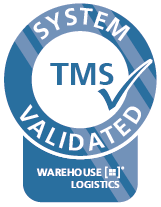Planning
Plan trips for the collection and delivery of your products, optimizing routes and respecting constraints. And all thanks to cartographic maps updated in real time and Machine Learning algorithms to automate the planning process.

Fraunhofer IML validation
In 2025 Onit reobtained the Fraunhofer IML validation for On.Plant/TMS.
The important German research institute, part of the largest applied research organization in Europe (Fraunhofer-Gesellschaft), has certified the quality of the software that allows the planning and optimization of shipments, enables tracking of trips in real-time and facilitates communications within the transport network.
Description
Thanks to Planning it is possible to have full control over the planning of freight transport routes.
Integrated with the company ERP, Planning manages customer and order data, as well as those of drivers, fleet vehicles and their availability.
With the help of specific cartographic maps, Planning optimizes trips taking into account road and traffic constraints, providing the most convenient route based on transport conditions.

Advantages
- Reduction of time spent by the office on planning
- Lower transport costs thanks to resource optimization
- Carbon Footprint reduction
- Better quality of service to the customer thanks to the reduction of errors
- Reduction of waiting times in delivery/loading from the Customer
- More certainty on suitability of the vehicle type based on the freight
- Increase in the quality of work of the transport office staff
- Optimization of the sales network and visits of agents in the area
The Planning features that improve your work
Travel planning
The transport orders contain all the information useful to define the stages of the journey for the collection/delivery of the goods, allowing you to choose the best transporter, vehicle and driver on the basis of tariffs, zones, etc.
The journey can be made in a few clicks from the operator on a cartographic map or, automatically, by the optimization system.
Logistic Constraints
Trips are optimized taking into account information relating to the vehicle, the goods transported, the hourly availability of the customer and drivers, the roads and the historical or real-time traffic conditions, the latter submitted by the cartographic services of the maps.
Product/Vehicle Compatibility
For each product and vehicle it is possible to assign labels: this allows you to check the compatibility between two products (e.g. BIO, not BIO) or between product and vehicle (e.g. Petrol and diesel tank trucks are NOT interchangeable)
Compartmented Vehicles
Allows the management of the typical loading problems of tank truck transport with different types of goods (e.g. feed, fuel, flour, etc.) or different types of temperatures (e.g. management of bulkheads for fresh, frozen, dry goods for large-scale distribution). For each type of vehicle it is possible to define a list of compartments, each with its own load capacity.
Machine Learning
Effective Machine Learning algorithms can be activated to speed up travel composition, especially in complex situations. It is a partial automation of the process, to support the irreplaceable experience of the office operator. They will actually be the ones to complete and validate the planning proposal.
Maps for heavy vehicles
Cartographic maps can support the operator during planning, providing all essential information such as prohibitions, speed limits, road closures and even restrictions for heavy vehicles or dangerous goods.
Strategic geomarketing
Allows you to build compact and balanced sales areas, supported by what-if performance analyses aimed at assessing whether the local organization is really efficient. Customers are represented on the map, for easier geographic analysis to optimize trips and sales areas.
Agent visits planning
Optimization of the scheduling of the visit plan for each agent, so as to reduce the hours that agents spend driving, devote more attention to customers and ensure the right visit frequency.
Driver planning
It supports the planner in scheduling shipments by providing a Gantt view that intuitively organizes each driver's driving/rest times. By systematizing waiting, rest, driving, loading and unloading times with the delivery plan, everything complies with legal regulations and inefficiency in transport times is eliminated.